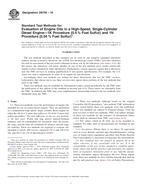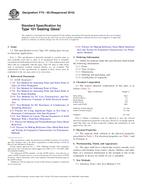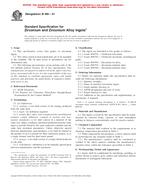1.1 These test methods provide techniques for the determination of the relative (Note 1) permittivity and the dissipation factor of solid insulating materials by fluid (Note 1) displacement.
Note 1–In common usage, the word “relative” is frequently dropped.
Note 2–The word “fluid” is a commonly used synonym for “liquid” and yet a gas is also a fluid. In these test methods the words fluid and liquid appear as synonyms, but the word fluid is also used to show that liquid is not all that is meant.
1.2 Test Method A is especially suited to the precise measurements on polyethylene sheeting at 23oC and at frequencies between 1 kHz and 1 MHz. It may also be used at other frequencies and temperatures to make measurements on other materials in sheet form.
1.3 Test Method B is limited to the frequency range of available guarded bridges. It is especially suited to measurements on very thin films since it does not require determination of the thickness of the specimen. The test method provides an estimate of the thickness of thin films which is more accurate and precise than thickness measurements obtained by other means.
1.4 Test Method B is also useful for measurements of polymer sheeting up to 2 mm thickness.
1.5 These test methods permit calculation of the dissipation factor of the specimens tested.
1.6 This standard does not purport to address all of the safety concerns, if any, associated with its use. It is the responsibility of the user of this standard to establish appropriate safety and health practices and determine the applicability of regulatory limitations prior to use. For a specific precautionary statement, see Note 3.
1.7 The values stated in SI units are to be regarded as the standard.
Product Details
- Published:
- 01/01/1995
- Number of Pages:
- 10
- File Size:
- 1 file , 92 KB


